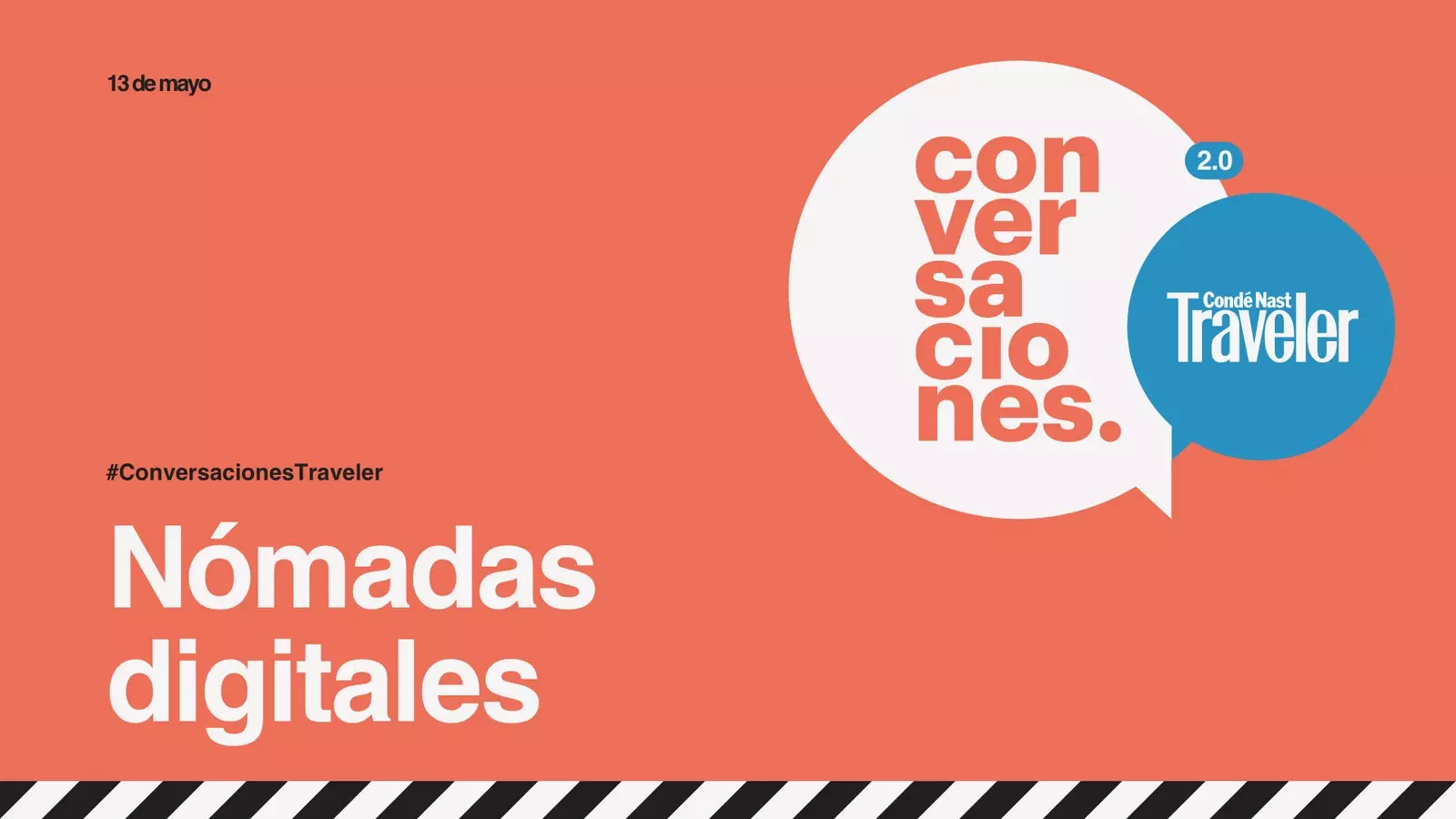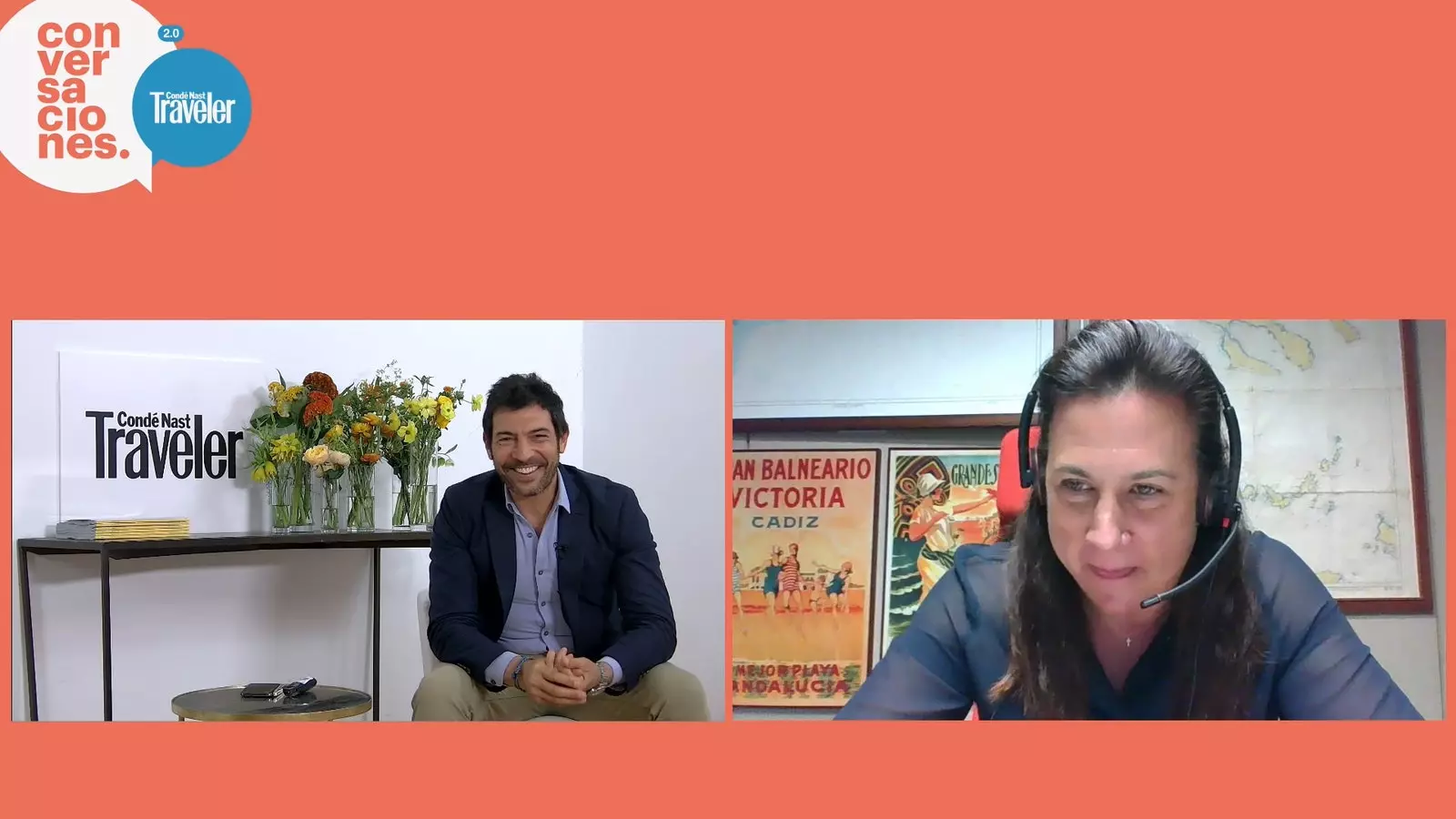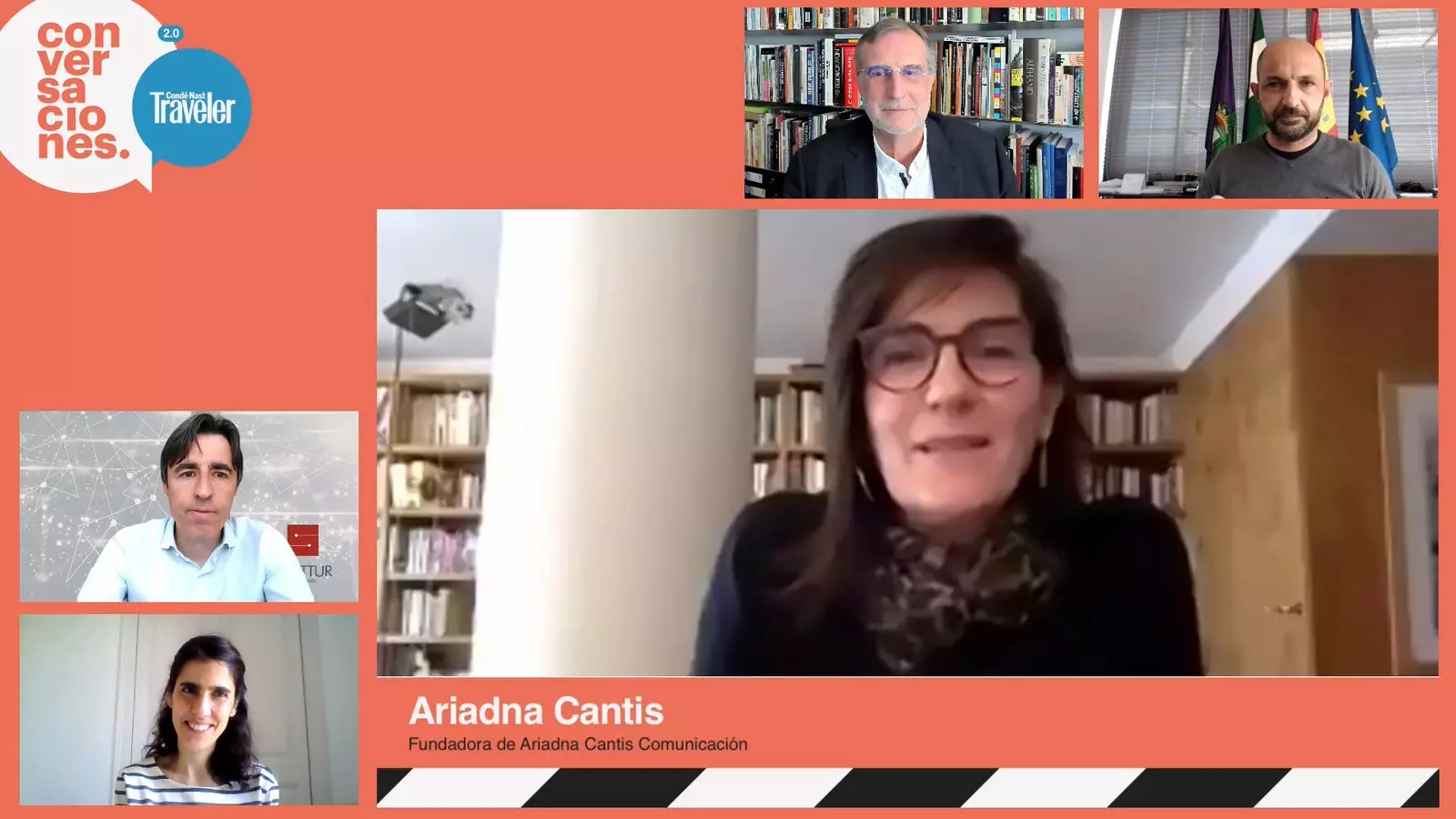
Condé Nast Traveler Conversations: Digital Nomads
The third day of the Condé Nast Traveler Conversations he was going to leave, but without leaving everything; to change scenery and the freedom that this gives, but without giving up staying in the labor market; to leave the city, but staying with the good of it. In short, he was or has been about what has been talked about so much lately, about become a digital nomad.
And no, we are not referring to those courses in which they promise you the unrealizable, we have talked about realities, realities already present. A good example of this was the first of the talks The city is not for me in which they have participated Carlos Jonay Suarez Digital Strategy consultant and co-founder of Pueblos Remotos, Nacho Rodriguez, founder of Nomad City, and public relations Rachel Sanchez, with Gem Monroy, editor-in-chief of Condé Nast Traveler, as moderator.
The teleworking that the pandemic has generalized, Will it be a flower of a day or has it come to stay? Will it serve to promote digitization and to repopulate those emptied areas? What do we have to take into account if we want to do it like this?
To get started, let's stop talking about digital nomads and bet on the use of the term telecommuting. This differentiation has been put on the table by Raquel, public relations who lives in Ibiza from where she works for clients who are mostly in Madrid. "Digital nomad and telecommuting are not merging."
digital nomadism It is just one of the options offered by the reality of teleworking. “Nomad is the one who travels permanently and digitally because he works in a digital environment”, introduces Nacho to then clarify that the teleworker is one who can work in other environments, but without the need to be constantly traveling. "You don't have to work from his house, you can be in the countryside, the beach and even in a coworking space that is closer to your usual work space."
And it is precisely this teleworking that has been implemented since the outbreak of the pandemic, becoming general during some periods of it and breaking with the stigma that it had within many companies. In the end, it turns out that it was possible to implement it digitally, what was missing (and is still missing) is culture.

Carlos Jonay, Nacho Rodriguez, Raquel Sanchez and Gema Monroy
“There is a culture of attendance, of people being in the office with a culture of control rather than trust. If you hire someone, it's because you trust that they can do the job and you don't care where they are”, sums up Carlos, who considers that, currently, we are not prepared for teleworking to be 100% implemented, and speaks of the fact that 25% of workers could be in it three or four years from now.
Nacho pointed out in the same sense, pointing out how the lack of presence during this period has caused discomfort in those team leaders who were not trained or did not have the necessary resources to manage work from a distance. In addition, he has also put on the table the lack of regulations to regulate this reality that has made many countries, including ours, have begun to legislate.
Raquel likes to think about the idea that this reality is here to stay and she invites employees to talk about it in their companies, to ask for it and to believe that yes, it is possible to leave that flat in Madrid and work with the beach in the background, how is she doing in this talk.
Studies suggest that in this circumstance increase creativity and productivity, and Raquel has begun to become obsessed with a concept, that of the 'work'. "I'll have a lifestyle that resembles my vacation, but working. And I do the same thing in much fewer hours because I'm in an environment that invites you to finish faster because I'm going to the beach as soon as I'm done and I'm going to watch the sunset”. Well of beauty that is a continuous stimulus for what we already said, creativity.
Nacho sees it the same way. "The weird thing in the next few years is going to be having to go to the office to work." The biggest handicap that he currently underlines is that of connectivity, but he is also aware that technology is advancing very quickly and that in a few years it will be easy to work from anywhere.
Along these lines, she highlights how attracting knowledge professionals will allow the economy of rural areas is activated, but it is important, as Carlos points out, on his part, that rurality is understood from the rural environment.
“First we have to understand rurality, improve it and see what we can add to improve it, but that does not imply gentrifying or urbanizing”, being aware that wherever we go we always generate an impact.
For him, teleworking is not new, it was already there. "He has been with us since 2000, what should happen is that it be normalized." Hopefully, because, as Gema Monroy concluded, "Thank you for encouraging us to live a new life."
The second of the conversations, Travel and corporate culture , has been borne by Rocío Abella, partner at Deloitte, who has shared a detailed analysis of business trends that will affect the world of travel.
Because the world has changed. The pandemic has blown up the digital transformation we were experiencing, where nothing was final. Neither do consumers and their needs. And the same has happened with the tourism industry.
When Covid-19 broke into our lives, tourism was on a clear rise due, among other things, to the growth of a middle class with travel possibilities.
With a current environment in which domestic travel predominates and the online channel continues to be relevant, tourism in the coming years presents several questions that can serve us, at the same time, as clues to glimpse how the sector will adapt to a reality that will seek a balance between what was before and what we have experienced recently.

Quico Taronji and Rocío Abella
Thus, it is expected an increase in demand due to the growth of the middle class; that the virtual does not replace the physical, but that they coexist in hybrid experiences; that it is necessary to work health, environmental, social, political and technological stability; that they develop public protection policies and regulation; and that the non-tourism tech giants who have begun to enter the sector show their cards.
Rocío insists a lot on the term phygital . "We don't believe that we are going to enjoy the world through screens, but rather we want mixed and hybrid models." We want For the digital world to complement the physical, we want our experiences to be richer thanks to our devices. "The physical gives us contact with people and that is going to come back to stay and we are going to give it a lot of value."
We will attach great importance to face-to-face relationships and “It is the world of tourism that is going to help us make this a reality and help us travel again and do it in a more innovative and experienced way.”
The third talk of the day was entitled Smart destinations. Telecommuting as a way of life: digital nomads and it has meant an enriching exchange of ideas about what the arrival of these itinerant workers means for cities, the positive they leave behind and the challenges they pose.
Carlos Romero Dexeus, R&D director of Segittur; Jose Maria Ezquiaga founding partner at Ezquiaga Arquitectura; Sea Santamaria, co-founder of 300,000 Km/s; Raul Lopez Maldonado Councilor Delegate of the Territory Planning Area of the Malaga City Council; Y the moderator Ariadna Cantis, founder of Ariadna Cantis Communication, have contributed different points of view to approach this reality.
With their opinions, the four rapporteurs have drawn up a definition of what they consider a smart destination. Carlos has underlined his character “innovative, sustainable, technological, accessible and its good governance”. Also the need for these places to provide autonomy so that digital nomads can carry out their work in total freedom and that, in addition, they have a series of attractions (cultural, gastronomic, social life...) that give that extra quality of life.
In addition, they must bet on diversify offer and to monitor the wishes and aspirations of these temporary visitors to know how to adapt over time and not be captive to a format that, when the time comes, may imply its decline.
At this point he will play, or is already playing, technology plays a key role, especially Big Data, with which you could avoid falling into mistakes of the past such as overcrowding. If in the summer of 2020 Benidorm managed to combine data and mobile applications to order access to its beaches, Why couldn't this be extrapolated to areas of cities where tourists traditionally congregate?

Carlos Romero, José María Ezquiaga, Mar Santamaría, Raúl López and Ariadna Cantis
“We have talked about tourism only with the number of hotel beds that we were having in the cities. The fact of having more data is key and that it be done in an open and shared way, too. The touristification project that we carried out in Madrid put data on the table that allowed us to map the phenomenon of touristification to generate a debate, go further and turn tourism into something that allows us to make policies transversal”, Mar indicated.
Transparency to avoid market rigidity because, as José María points out, "Big Data helps us deseasonalize, which is key and is the Achilles' heel of many destinations."
“The interesting thing is that the seasonality is not so short, that we create a space of stability so that those who can choose where to live and choose our city, (...) in addition to the ordinary, demand a plus: health, the gastronomic network and, at an urban level, that we try to mix uses with the regulation of tourist housing, that there is a possibility of mixing commercial and residential uses so that there is no sectorization with declines when there are ups and downs”, explains Raúl.
All this focused on capturing talent that allows destinations not depend exclusively on tourism, but that puts two aspects on the table: housing regulation and supply for those people who move to a place for a long time, but not indefinitely.
Regulation because, as Mar points out, citing the case of Barcelona as an example, attracting talent implies economic improvement, but it also the expulsion of the local population from their places of residence caused by the arrival of people with greater purchasing power which increases the standard of living. "It is necessary to understand how this temporary use of the city can be regulated."
Regarding housing, the demand of public opinion, the transparency that Big Data facilitates, the evolution of our concept of housing motivated by the changes that we can experience in our lives or models such as Build to rent, that go through the construction of homes focused on this type of rental that does not take away space from tourism or residential, will be key for the real estate sector to change.
Yes indeed, this trend does not imply the end of urban life in large cities. “Hopefully Empty Spain will benefit from teleworking, but talent calls for talent and people want to be where there are similar people with the same concerns, a breeding ground for interaction. We have seen the value of chance encounter. The city is in very good health. says Jose Maria.
